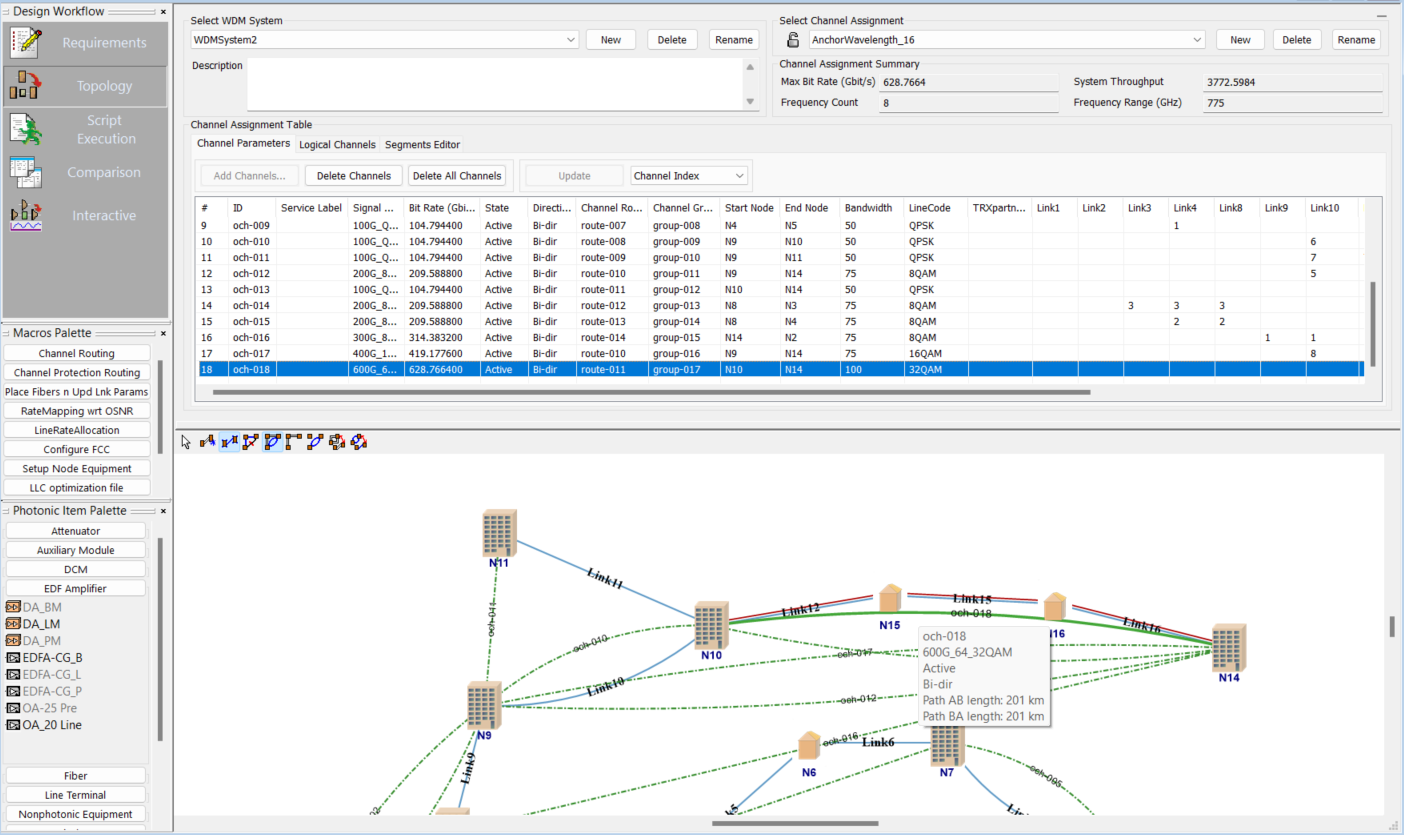VPIphotonics announces the release of VPIlinkConfigurator Version 4.4, a versatile software tool for optical network engineering including automatic equipment placement and configuration and a thorough system-wide performance assessment. It supports equipment configuration and detailed performance calculation of complex networks including ROADMs and true ring topologies. A powerful API enables interfacing with third-party software such as common office applications and databases in addition to custom applications
Version 4.4 improves the network design workflow and provides functionality that supports multi-band DWDM transmission technologies
including high bit rate transceivers with advanced modulation formats, colorless directionless and contentionless (CDC) configurations
along with flexgrid wavelength assignment. The new built-in functionality simplifies and accelerates the design process. With the improved
capabilities provided in version 4.4, VPIlinkConfigurator continuously supports its existing and addresses new applications.

VPIlinkConfigurator of Version 4.4
Simplified Equipment Library Management – to update system requirements parameters automatically when new network design is started or to select the required library easily when an existing network design is updated.
Design Assistant – Updated Summary Table to report broken connections along with violations of equipment limits and design constraints.
Add/Drop Equipment Configuration – Enhanced Setup Node Equipment tool to allocate add/drop equipment for several nodes or the whole network simultaneously.
Multi band DWDM signal and Flex grid – simulation engine was enhanced with respect to simulation time and memory utilization.
Nonlinear Impairments – enhanced fiber models to account for Inter Channel Stimulated Raman Scattering (ISRS), which is critical at modeling the wide band DWDM transmission line.
Equalization Mode – an improved version of WSS ROADM model to account for an Optical Channel bandwidth that can significantly differ from the symbol rate for several advanced modulation formats.
Traffic Demand Routing Algorithms – a new routing algorithm to account for the OSNR degradation due to amplifier noise. The existing routing algorithms have been significantly accelerated.